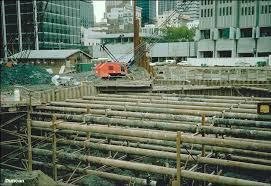Oct . 06, 2024 17:03 Back to list
curved column formwork
The Advancement of Curved Column Formwork in Construction
Curved column formwork represents a significant advancement in modern construction techniques, enabling architects and builders to implement innovative designs that were previously considered impractical or overly complex. The ability to create smooth, flowing curves in concrete structures not only enhances aesthetic appeal but also contributes to structural integrity. This article explores the benefits, applications, and recent developments in curved column formwork.
Understanding Curved Column Formwork
Curved column formwork is a specialized system designed to mold concrete into curved shapes. Unlike traditional straight column formwork, which typically consists of flat panels, curved formwork is engineered to accommodate the specific radius and curvature of a design. This involves advanced materials and construction techniques that allow for flexibility and precision.
Benefits of Curved Column Formwork
1. Aesthetic Versatility One of the primary advantages of using curved column formwork is the aesthetic appeal it provides to buildings. Curved structures can break the monotony of conventional designs, adding an element of dynamism and creativity. This artistic freedom allows architects to push the boundaries of conventional building designs, resulting in iconic and captivating structures.
2. Structural Advantages Curved columns can also enhance the structural performance of a building. The shape can help to better distribute loads, resist lateral forces, and improve the overall stiffness of the structure. In high-rise buildings or areas prone to seismic activity, this can lead to safer and more resilient designs.
3. Efficiency in Construction With advancements in technology, the fabrication and installation of curved formwork have become more efficient. Pre-fabricated panels can significantly reduce labor time on site. Additionally, the use of lightweight materials for formwork construction minimizes the overall transportation and handling burdens.
curved column formwork

4. Improved Concrete Finish The smooth surfaces achieved through curved formwork can lead to a better finish on the concrete, reducing the need for extensive post-construction treatments. This not only saves time but also reduces costs associated with surface finishing and maintenance.
Applications of Curved Column Formwork
Curved column formwork has found its applications in various types of construction projects. It is commonly used in
- Cultural and Civic Buildings Museums, galleries, and civic centers often feature unique architectural designs that utilize curved columns to create striking visual effects. - Commercial and Retail Spaces Shopping complexes and office buildings adopt curved forms to enhance the shopping experience and create engaging work environments. - Bridges and Infrastructure Curved columns are increasingly being used in bridge designs and other infrastructure projects, not only for aesthetics but also to manage load distribution and environmental stresses.
Recent Developments
Recent developments in technology have further improved the viability of curved column formwork. Innovations in software for architectural design, such as Building Information Modeling (BIM), enable architects and engineers to visualize and simulate curved structures before they are built, ensuring better planning and coordination. Additionally, advancements in materials, such as high-strength polymers and composites, enhance the durability and functionality of formwork used for curved columns.
Conclusion
Curved column formwork is revolutionizing the construction industry by allowing for more creative and structurally sound designs. As engineers and architects continue to explore the possibilities, the use of curved forms will likely become increasingly common. With their aesthetic appeal and structural benefits, curved columns are not only here to stay but are set to play a crucial role in the future of architectural innovation. By embracing this technique, we can expect to see buildings that are not only functional but also works of art that inspire and endure.
-
High-Quality U Head Jack Scaffolding – Reliable Scaffolding Jack Head Manufacturer & Factory
NewsJul.08,2025
-
High-Quality I Beam H20 Leading Timber Beam H20 Material Factory, Exporters & Manufacturers
NewsJul.08,2025
-
High-Quality Powder Coating Steel Formwork - Durable & Corrosion Resistant Solutions
NewsJul.07,2025
-
Inclined Column Formwork Supplier – Durable & Precise Solutions for Unique Structures
NewsJul.07,2025
-
High-Quality Water Stop Solutions Trusted Water Stop Company & Suppliers
NewsJul.07,2025
-
High-Quality Formwork Material Supplier Reliable Manufacturer & Factory Solutions
NewsJul.06,2025